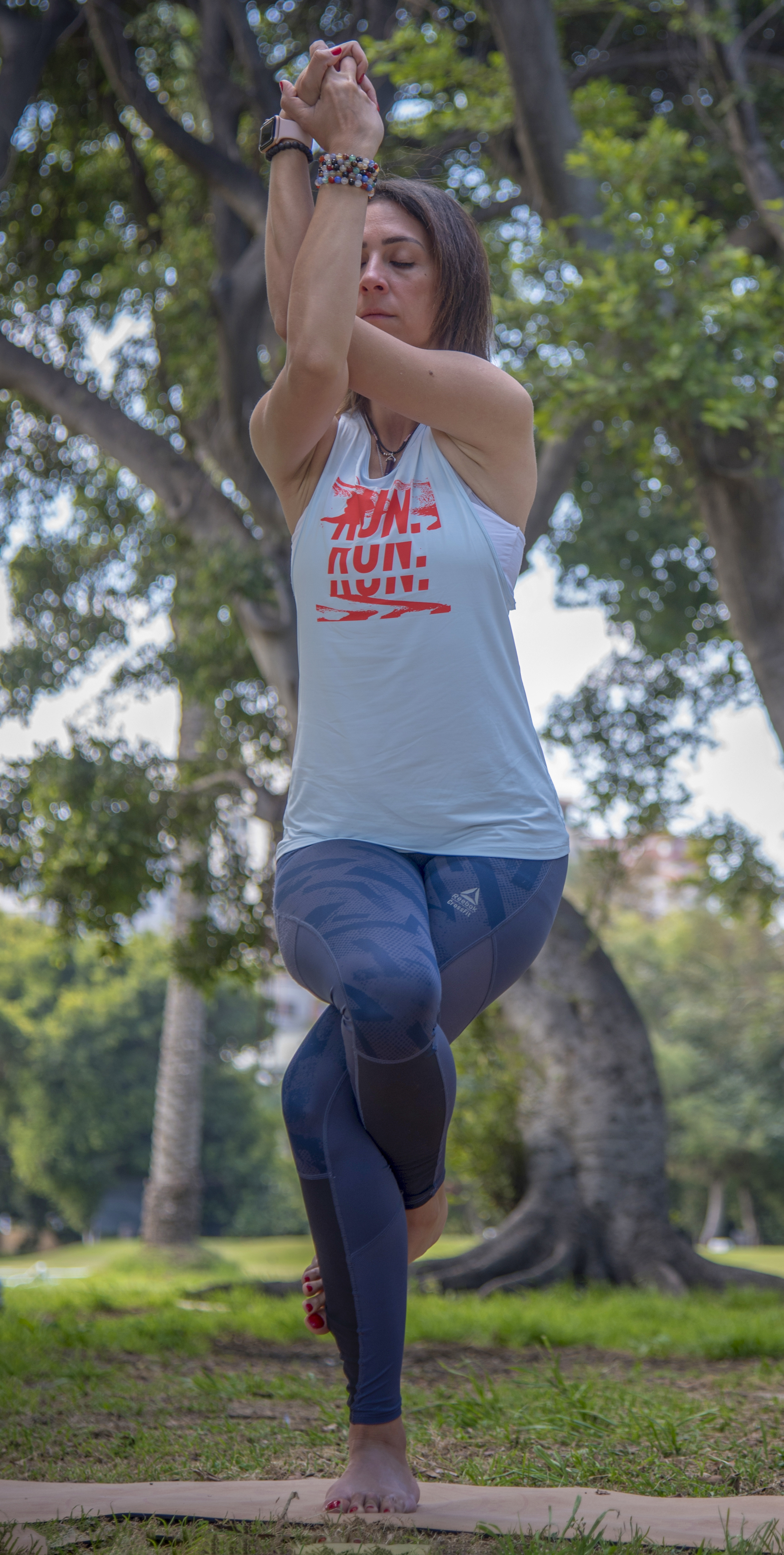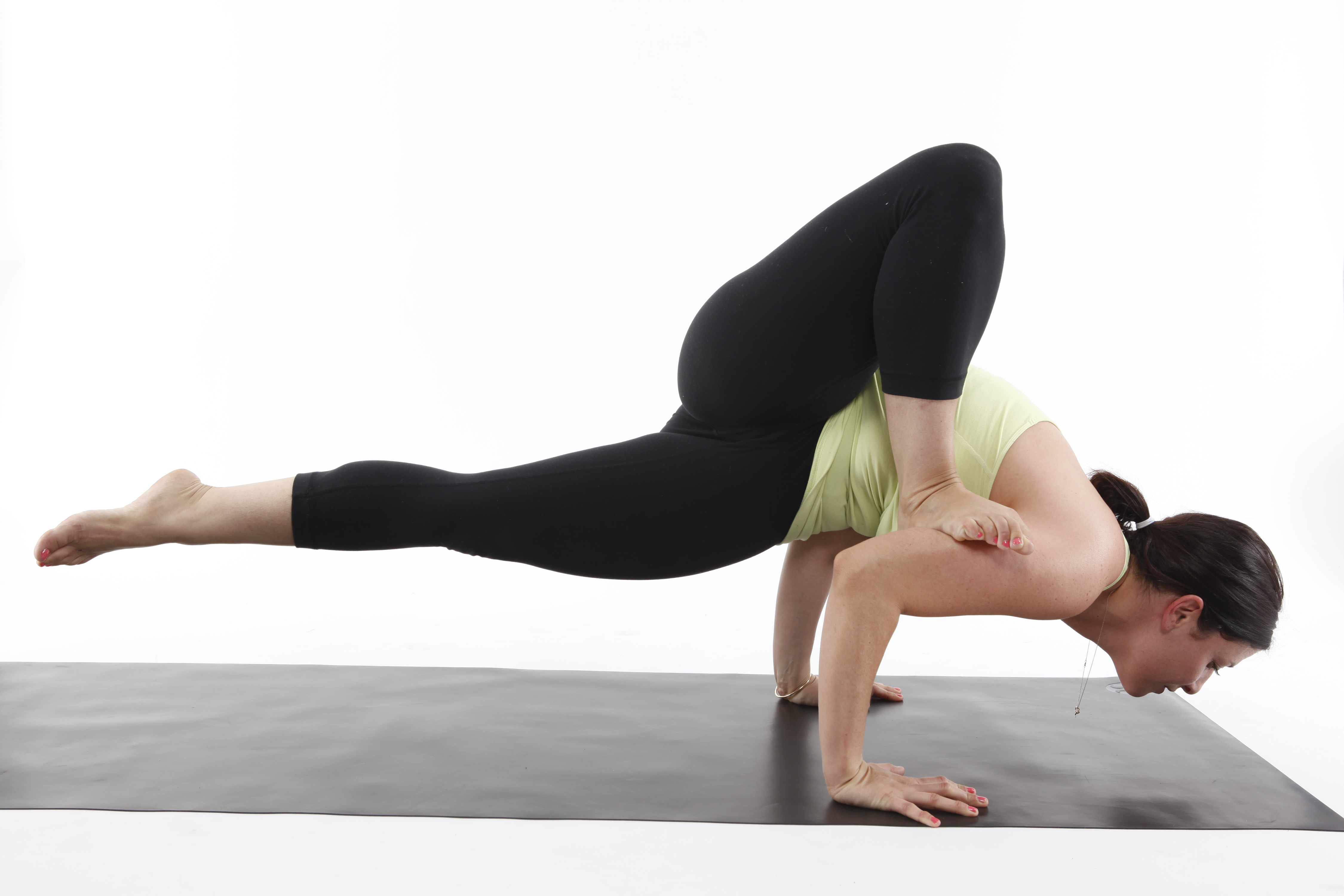|
Garudasana
Garudasana ( sa, गरुडासन; IAST: ''Garuḍāsana'') or Eagle Pose is a standing balancing asana in modern yoga as exercise. The name was used in medieval hatha yoga for a different pose. Etymology and origins The name comes from the Sanskrit words ''garuda'' (गरुड) meaning "eagle", and ''asana'' (आसन) meaning "posture" or "seat". In Hindu mythology, Garuda is known as the king of birds. He is the ''vahana'' (mount) of the God Vishnu and is eager to help humanity fight against demons. The word is usually rendered into English as "eagle", though the name literally means "devourer", because Garuda was originally identified with the "all-consuming fire of the sun's rays". The name is used for a different pose in the late 17th-century Gheranda Samhita, verse 2.37, which has the legs and thighs on the ground, and the hands on the knees. A one-legged balancing pose named Garudasana but closer to Vrikshasana is described and illustrated in the 19th ce ... [...More Info...] [...Related Items...] OR: [Wikipedia] [Google] [Baidu] |
Garudasana In Park
Garudasana ( sa, गरुडासन; IAST: ''Garuḍāsana'') or Eagle Pose is a standing balancing asana in modern yoga as exercise. The name was used in medieval hatha yoga for a different pose. Etymology and origins The name comes from the Sanskrit words ''garuda'' (गरुड) meaning "eagle", and ''asana'' (आसन) meaning "posture" or "seat". In Hindu mythology, Garuda is known as the king of birds. He is the ''vahana'' (mount) of the God Vishnu and is eager to help humanity fight against demons. The word is usually rendered into English as "eagle", though the name literally means "devourer", because Garuda was originally identified with the "all-consuming fire of the sun's rays". The name is used for a different pose in the late 17th-century Gheranda Samhita, verse 2.37, which has the legs and thighs on the ground, and the hands on the knees. A one-legged balancing pose named Garudasana but closer to Vrikshasana is described and illustrated in the 19th ce ... [...More Info...] [...Related Items...] OR: [Wikipedia] [Google] [Baidu] |
Asana
An asana is a body posture, originally and still a general term for a sitting meditation pose,Verse 46, chapter II, "Patanjali Yoga sutras" by Swami Prabhavananda, published by the Sri Ramakrishna Math p. 111 and later extended in hatha yoga and modern yoga as exercise, to any type of position, adding reclining, standing, inverted, twisting, and balancing poses. The ''Yoga Sutras of Patanjali'' define "asana" as " position thatis steady and comfortable". Patanjali mentions the ability to sit for extended periods as one of the eight limbs of his system. Patanjali ''Yoga sutras'', Book II:29, 46 Asanas are also called yoga poses or yoga postures in English. The 10th or 11th century '' Goraksha Sataka'' and the 15th century '' Hatha Yoga Pradipika'' identify 84 asanas; the 17th century ''Hatha Ratnavali'' provides a different list of 84 asanas, describing some of them. In the 20th century, Indian nationalism favoured physical culture in response to colonialism. In that enviro ... [...More Info...] [...Related Items...] OR: [Wikipedia] [Google] [Baidu] |
Hip-opening Asanas
An asana is a body posture, originally and still a general term for a sitting meditation pose,Verse 46, chapter II, "Patanjali Yoga sutras" by Swami Prabhavananda, published by the Sri Ramakrishna Math p. 111 and later extended in hatha yoga and modern yoga as exercise, to any type of position, adding reclining, standing, inverted, twisting, and balancing poses. The ''Yoga Sutras of Patanjali'' define "asana" as " position thatis steady and comfortable". Patanjali mentions the ability to sit for extended periods as one of the eight limbs of his system. Patanjali ''Yoga sutras'', Book II:29, 46 Asanas are also called yoga poses or yoga postures in English. The 10th or 11th century '' Goraksha Sataka'' and the 15th century '' Hatha Yoga Pradipika'' identify 84 asanas; the 17th century ''Hatha Ratnavali'' provides a different list of 84 asanas, describing some of them. In the 20th century, Indian nationalism favoured physical culture in response to colonialism. In that enviro ... [...More Info...] [...Related Items...] OR: [Wikipedia] [Google] [Baidu] |
List Of Asanas
An asana is a body posture, used in both medieval hatha yoga and modern yoga. The term is derived from the Sanskrit word for 'seat'. While many of the oldest mentioned asanas are indeed seated postures for meditation, asanas may be standing, seated, arm-balances, twists, inversions, forward bends, backbends, or reclining in prone or supine positions. The asanas have been given a variety of English names by competing schools of yoga. The traditional number of asanas is the symbolic 84, but different texts identify different selections, sometimes listing their names without describing them. Some names have been given to different asanas over the centuries, and some asanas have been known by a variety of names, making tracing and the assignment of dates difficult. For example, the name Muktasana is now given to a variant of Siddhasana with one foot in front of the other, but has also been used for Siddhasana and other cross-legged meditation poses. As another example, the headstand ... [...More Info...] [...Related Items...] OR: [Wikipedia] [Google] [Baidu] |
Garuda
Garuda (Sanskrit: ; Pāli: ; Vedic Sanskrit: गरुळ Garuḷa) is a Hindu demigod and divine creature mentioned in the Hindu, Buddhist and Jain faiths. He is primarily depicted as the mount (''vahana'') of the Hindu god Vishnu. Garuda is also the half-brother of the Devas, Daityas, Danavas and Yakshas. He is the son of the sage Kashyapa and Vinata. He is the younger brother of Aruna, the charioteer of the Sun. Garuda is mentioned in several other texts such as the Puranas and the Vedas. Garuda is described as the king of the birds and a kite-like figure. He is shown either in a zoomorphic form (a giant bird with partially open wings) or an anthropomorphic form (a man with wings and some ornithic features). Garuda is generally portrayed as a protector with the power to swiftly travel anywhere, ever vigilant and an enemy of every serpent. He is also known as Tarkshya and Vainateya. Garuda is a part of state insignia of India, Indonesia and Thailand. The Indonesian official ... [...More Info...] [...Related Items...] OR: [Wikipedia] [Google] [Baidu] |
Yoga Journal
''Yoga Journal'' is a website and digital journal, formerly a print magazine, on yoga as exercise founded in California in 1975 with the goal of combining the essence of traditional yoga with scientific understanding. It has produced live events and materials such as DVDs on yoga and related subjects. The magazine grew from the California Yoga Teachers Association's newsletter, which was called ''The Word''. ''Yoga Journal'' has repeatedly won Western Publications Association's Maggie Awards for "Best Health and Fitness Magazine". It has however been criticized for representing yoga as being intended for affluent white women; in 2019 it attempted to remedy this by choosing a wider variety of yoga models. Beginnings ''Yoga Journal'' was started in May 1975 by the California Yoga Teachers Association (CYTA), with Rama Jyoti Vernon as President, William Staniger as the founding editor, and Judith Lasater on the board and serving as copy editor. Their goal was to combine "the ess ... [...More Info...] [...Related Items...] OR: [Wikipedia] [Google] [Baidu] |
Asymmetry
Asymmetry is the absence of, or a violation of, symmetry (the property of an object being invariant to a transformation, such as reflection). Symmetry is an important property of both physical and abstract systems and it may be displayed in precise terms or in more aesthetic terms. The absence of or violation of symmetry that are either expected or desired can have important consequences for a system. In organisms Due to how cells divide in organisms, asymmetry in organisms is fairly usual in at least one dimension, with biological symmetry also being common in at least one dimension. Louis Pasteur proposed that biological molecules are asymmetric because the cosmic .e. physicalforces that preside over their formation are themselves asymmetric. While at his time, and even now, the symmetry of physical processes are highlighted, it is known that there are fundamental physical asymmetries, starting with time. Asymmetry in biology Asymmetry is an important and widespread ... [...More Info...] [...Related Items...] OR: [Wikipedia] [Google] [Baidu] |
Yoga Dipika
Yoga (; sa, योग, lit=yoke' or 'union ) is a group of physical, mental, and spiritual practices or disciplines which originated in ancient India and aim to control (yoke) and still the mind, recognizing a detached witness-consciousness untouched by the mind ('' Chitta'') and mundane suffering ('' Duḥkha''). There is a wide variety of schools of yoga, practices, and goals in Hinduism, Buddhism, and Jainism,Stuart Ray Sarbacker, ''Samādhi: The Numinous and Cessative in Indo-Tibetan Yoga''. SUNY Press, 2005, pp. 1–2.Tattvarthasutra .1 see Manu Doshi (2007) Translation of Tattvarthasutra, Ahmedabad: Shrut Ratnakar p. 102. and traditional and modern yoga is practiced worldwide. Two general theories exist on the origins of yoga. The linear model holds that yoga originated in the Vedic period, as reflected in the Vedic textual corpus, and influenced Buddhism; according to author Edward Fitzpatrick Crangle, this model is mainly supported by Hindu scholars. According ... [...More Info...] [...Related Items...] OR: [Wikipedia] [Google] [Baidu] |
Kauai
Kauai, () anglicized as Kauai ( ), is geologically the second-oldest of the main Hawaiian Islands (after Niʻihau). With an area of 562.3 square miles (1,456.4 km2), it is the fourth-largest of these islands and the 21st largest island in the United States. Nicknamed the Garden Isle, Kauai lies 73 miles (117 km) across the Kauai Channel, northwest of Oahu. This island is the site of Waimea Canyon State Park and the Na Pali Coast State Park. The United States Census Bureau defines Kauai as census tracts 401 through 409 of Kauai County, Hawaii, which comprises all of the county except the islands of Kaʻula, Lehua and Niihau. The 2020 United States census population of the island was 73,298. The most populous town is Kapaa. Etymology and language Hawaiian narrative locates the name's origin in the legend of Hawaiiloa, the Polynesian navigator credited with discovery of the Hawaiian Islands. The story relates how he named the island of Kauai after a favorite son; ... [...More Info...] [...Related Items...] OR: [Wikipedia] [Google] [Baidu] |
Mariel Hemingway
Mariel Hadley Hemingway (born November 22, 1961) is an American actress. She began acting at age 14 with a Golden Globe-nominated breakout role in ''Lipstick'' (1976), and she received Academy and BAFTA Award nominations for her performance in Woody Allen's ''Manhattan'' (1979). She is also known for her leading roles in '' Personal Best'' (1982), ''Star 80'' (1983), and the TV series ''Civil Wars'' for which she received a Golden Globe nomination. Amid mental health struggles, Hemingway's career dwindled in the 1990s. She has starred in and co-produced videos about yoga and holistic living. She published a yoga memoir, '' Finding My Balance'', in 2002, and a more general memoir, ''Out Came the Sun'', in 2015. Early life Hemingway was born in Mill Valley, California, the third daughter of Byra Louise (née Whittlesey) and Jack Hemingway, a writer. Her sisters are Joan "Muffet" and Margot "Margaux", the latter of whom became a model and actress. Her paternal grandparents were ... [...More Info...] [...Related Items...] OR: [Wikipedia] [Google] [Baidu] |









